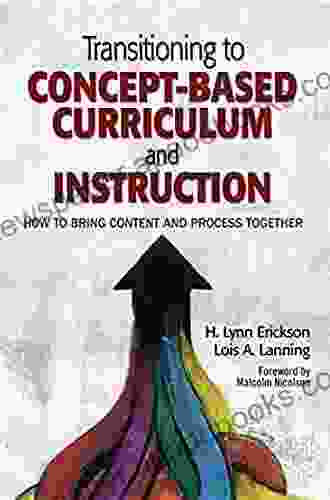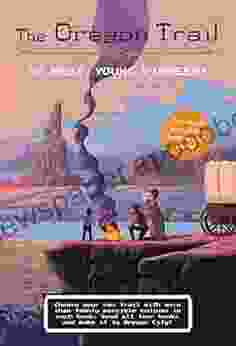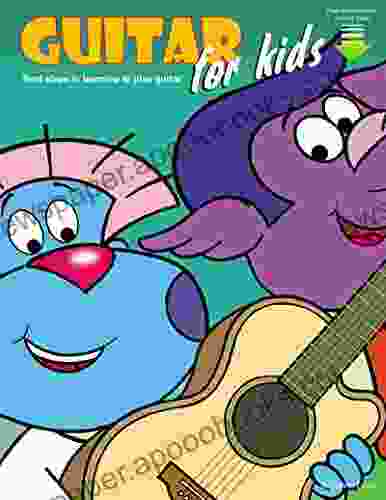Unlocking Educational Excellence: How to Bring Content and Process Together with Concept-Based Curriculum

In the ever-evolving landscape of education, the concept-based curriculum stands out as a beacon of innovation, promising to revolutionize the way we teach and learn. By seamlessly integrating content and process, this transformative approach empowers students to develop a deep understanding of the world around them, fostering critical thinking, creativity, and problem-solving abilities.
4.6 out of 5
| Language | : | English |
| File size | : | 15715 KB |
| Text-to-Speech | : | Enabled |
| Screen Reader | : | Supported |
| Enhanced typesetting | : | Enabled |
| Word Wise | : | Enabled |
| Print length | : | 224 pages |
The Cornerstone of Concept-Based Curriculum: Unifying Content and Process
Traditional curricula often compartmentalize content and process, treating them as separate entities. This fragmented approach can hinder students' ability to make meaningful connections between what they learn and how they learn it. In contrast, concept-based curriculum recognizes the intrinsic interdependence of content and process, viewing them as two sides of the same educational coin.
By bringing content and process together, concept-based curriculum:
- Enhances understanding: Students actively engage with content through inquiry, experimentation, and problem-solving, fostering a deeper grasp of concepts.
- Promotes critical thinking: The process-oriented nature challenges students to analyze, synthesize, and evaluate information, developing their critical thinking skills.
- Cultivates creativity: Students are encouraged to explore different perspectives and solutions, fostering creativity and innovation.
- Provides real-world relevance: Concepts are presented in meaningful contexts, connecting learning to students' lives and future aspirations.
Transforming the Learning Experience: A Step-by-Step Guide
Embracing concept-based curriculum requires a thoughtful and strategic approach. Educators can follow these steps to create a dynamic and effective learning environment:
- Identify core concepts: Begin by defining the essential concepts that students should master. These concepts should be broad, transferable, and applicable to various contexts.
- Develop learning activities: Design hands-on, interactive, and inquiry-based activities that allow students to explore concepts in depth. Encourage collaboration, discussion, and experimentation.
- Foster critical reflection: Provide opportunities for students to reflect on what they have learned and how they have learned it. This helps them develop metacognitive skills and evaluate their own progress.
- Integrate technology: Leverage technology to enhance learning experiences and make concepts more accessible and engaging for students.
- Assess for understanding: Use a variety of assessment methods to measure students' conceptual understanding, critical thinking abilities, and problem-solving skills.
Empowering Students: The Benefits of Concept-Based Curriculum
The transformative power of concept-based curriculum extends far beyond the classroom, empowering students with skills and knowledge that will serve them well throughout their lives:
- Improved academic performance: Students who engage with concept-based curriculum demonstrate higher levels of academic achievement and deeper understanding of content.
- Enhanced critical thinking and problem-solving: The emphasis on inquiry and problem-solving develops students' ability to think critically and creatively, preparing them for future challenges.
- Increased motivation and engagement: By connecting learning to real-world contexts and fostering active participation, concept-based curriculum increases student motivation and engagement.
- Lifelong learning: The conceptual framework developed through this approach encourages students to continue learning and exploring throughout their lives.
: A Path to Educational Excellence
The concept-based curriculum is not merely an educational trend; it is a transformative approach that has the power to unlock educational excellence. By bringing content and process together, educators can create dynamic and engaging learning experiences that empower students to become critical thinkers, problem solvers, and lifelong learners. As we navigate the ever-changing educational landscape, let us embrace the transformative possibilities of concept-based curriculum and equip our students with the skills they need to succeed in the 21st century and beyond.
4.6 out of 5
| Language | : | English |
| File size | : | 15715 KB |
| Text-to-Speech | : | Enabled |
| Screen Reader | : | Supported |
| Enhanced typesetting | : | Enabled |
| Word Wise | : | Enabled |
| Print length | : | 224 pages |
Do you want to contribute by writing guest posts on this blog?
Please contact us and send us a resume of previous articles that you have written.
 Book
Book Novel
Novel Page
Page Chapter
Chapter Text
Text Story
Story Genre
Genre Reader
Reader Library
Library Paperback
Paperback E-book
E-book Magazine
Magazine Newspaper
Newspaper Paragraph
Paragraph Sentence
Sentence Bookmark
Bookmark Shelf
Shelf Glossary
Glossary Bibliography
Bibliography Foreword
Foreword Preface
Preface Synopsis
Synopsis Annotation
Annotation Footnote
Footnote Manuscript
Manuscript Scroll
Scroll Codex
Codex Tome
Tome Bestseller
Bestseller Classics
Classics Library card
Library card Narrative
Narrative Biography
Biography Autobiography
Autobiography Memoir
Memoir Reference
Reference Encyclopedia
Encyclopedia Glenn J Dorn
Glenn J Dorn Scott A Young
Scott A Young Greta Van Susteren
Greta Van Susteren Marian L Tupy
Marian L Tupy Guy Arnold
Guy Arnold Lynn Donovan
Lynn Donovan George Lyman Kittredge
George Lyman Kittredge Rachel Wells
Rachel Wells Laura Hall
Laura Hall Gordon Leidner
Gordon Leidner Jim Samson
Jim Samson Glenn Meade
Glenn Meade S Melvin Rines
S Melvin Rines June Diane Raphael
June Diane Raphael Sandra Friend
Sandra Friend Gail Radford
Gail Radford Prasanth Kallay
Prasanth Kallay Lisa Ann Gallagher
Lisa Ann Gallagher Joseph Delaney
Joseph Delaney George Farah
George Farah
Light bulbAdvertise smarter! Our strategic ad space ensures maximum exposure. Reserve your spot today!
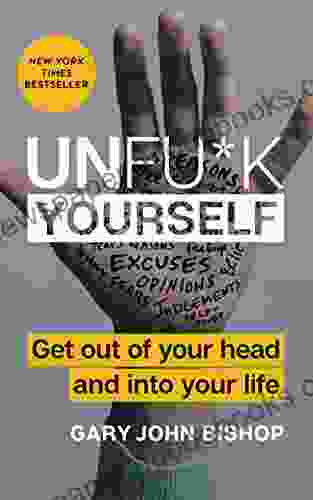
 Peter CarterUnleash Your Potential: Get Out of Your Head and Into Your Life Unfu Yourself...
Peter CarterUnleash Your Potential: Get Out of Your Head and Into Your Life Unfu Yourself... Xavier BellFollow ·17.2k
Xavier BellFollow ·17.2k Duane KellyFollow ·14.5k
Duane KellyFollow ·14.5k Jonathan HayesFollow ·14.7k
Jonathan HayesFollow ·14.7k Jayson PowellFollow ·12.3k
Jayson PowellFollow ·12.3k Neal WardFollow ·17.1k
Neal WardFollow ·17.1k Dustin RichardsonFollow ·2k
Dustin RichardsonFollow ·2k Victor HugoFollow ·7k
Victor HugoFollow ·7k Dominic SimmonsFollow ·2.8k
Dominic SimmonsFollow ·2.8k

 Ken Follett
Ken FollettDiscover the Enchanting World of Classical Piano with "10...
A Symphony of Timeless...

 Cody Russell
Cody RussellTheo On The Ice Boston Bay Vikings: A Hockey Adventure...
Theo On The Ice...

 Nathaniel Hawthorne
Nathaniel HawthorneBach for Easy Guitar: Unleash the Genius of the Baroque...
Johann Sebastian Bach, the undisputed...
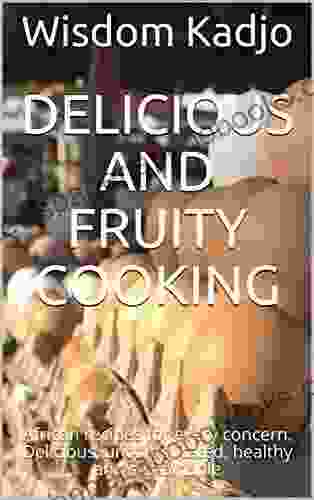
 Brenton Cox
Brenton CoxAfrican Recipes For Every Concern: Delicious,...
Embark on a Culinary Journey to the Heart of...
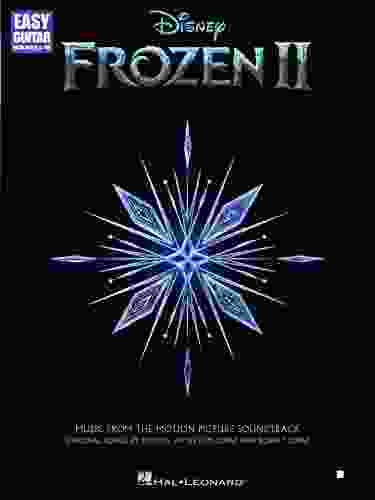
 Lawrence Bell
Lawrence BellEasy Guitar With Notes Tab: Your Ultimate Guide to...
Unlock the World...
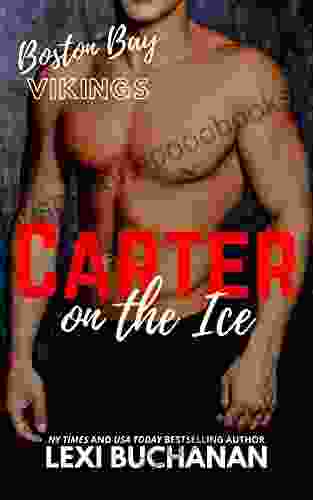
 Brenton Cox
Brenton CoxCarter On The Ice: A Thrilling Sports Novel
Synopsis ...
4.6 out of 5
| Language | : | English |
| File size | : | 15715 KB |
| Text-to-Speech | : | Enabled |
| Screen Reader | : | Supported |
| Enhanced typesetting | : | Enabled |
| Word Wise | : | Enabled |
| Print length | : | 224 pages |


